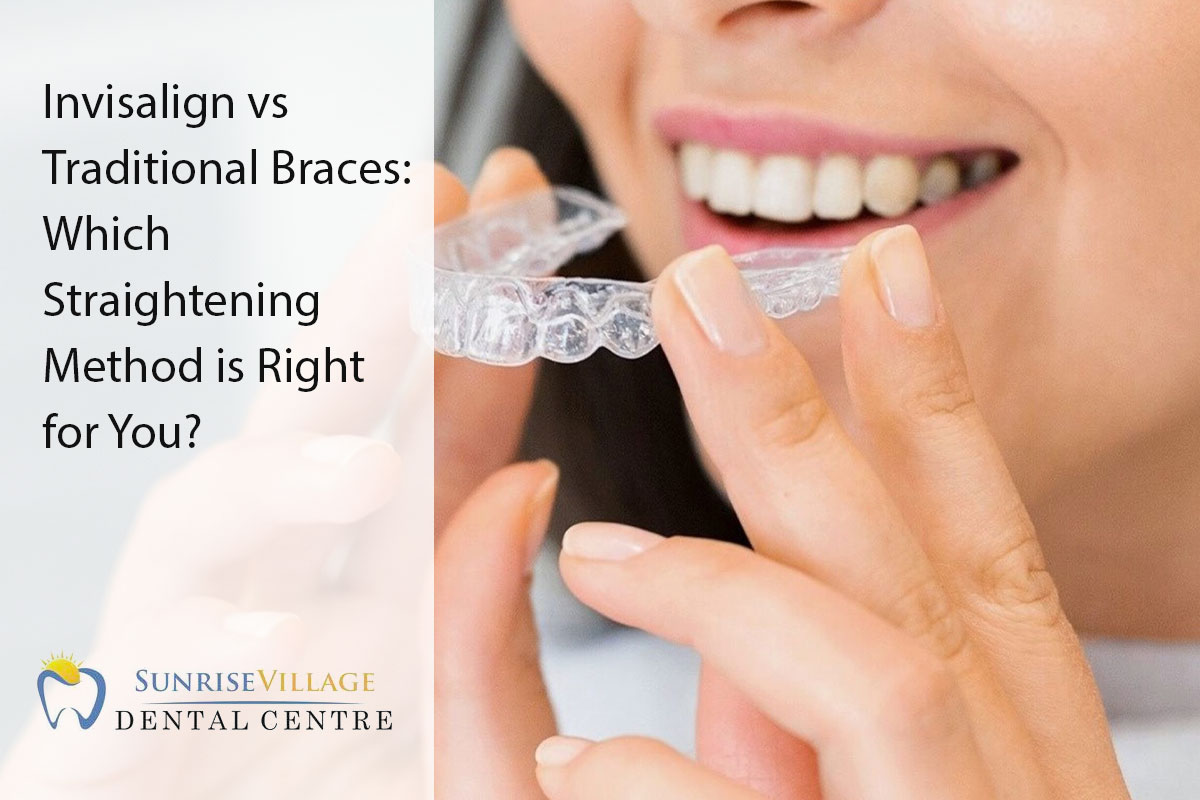
Seeking a perfectly aligned smile? Choosing between Invisalign and traditional braces is a common dilemma. To make an informed decision, consider factors like your lifestyle, treatment goals, and oral health. This article explores the key differences between Invisalign and traditional braces, helping you select the method that best suits your needs and gets you closer to your dream smile.
Understanding Invisalign
Invisalign, also called clear or invisible braces, is a modern orthodontic treatment using clear plastic aligners to straighten teeth, a comfortable alternative to traditional metal braces. The process begins with a consultation with an Invisalign-trained orthodontist who assesses your teeth and creates a custom treatment plan based on digital impressions and a 3D model of your mouth. The aligners gradually shift your teeth into the desired position, with each set worn for about two weeks. Treatment duration varies, typically lasting 12-18 months based on case complexity.
Understanding traditional braces
Traditional metal braces, a long-standing method for teeth straightening, involve metal brackets affixed to each tooth, interconnected by a wire that is periodically tightened to exert pressure and gradually reposition the teeth. Unlike Invisalign, these braces are fixed in place and cannot be removed until treatment completion, requiring caution in eating and oral hygiene to prevent damage to the brackets or wires. The duration of treatment varies based on case complexity, with most individuals wearing traditional braces for 18-24 months, necessitating regular orthodontist visits for adjustments and maintenance.
Pros and cons of Invisalign
Pros:
- Aesthetic: Invisalign aligners are virtually invisible, making them a great option for people who are self-conscious about wearing braces.
- Removable: You can remove the aligners when eating, brushing your teeth, or for special occasions.
- Comfortable: Invisalign aligners are made of a smooth plastic material that’s less likely to irritate your gums and cheeks than traditional braces.
- Shorter treatment time: Invisalign treatment typically takes less time than traditional braces, especially for mild to moderate cases.
- No food restrictions: You can eat whatever you want with Invisalign since the aligners are removable.
Cons:
- Not suitable for complex cases: Invisalign may not be suitable for people with severe crowding, bite issues, or other complex orthodontic problems.
- Requires discipline: You need to wear the aligners for at least 22 hours a day to see results, which can be challenging for some people.
- Can be expensive: Invisalign treatment can be more expensive than traditional braces, depending on your location and the complexity of your case.
- Requires good oral hygiene: You need to brush and floss your teeth regularly to avoid cavities and gum disease, especially since the aligners can trap food and plaque.
Pros and cons of traditional braces
Pros:
- Precision: Traditional braces offer precise control, making them ideal for complex orthodontic cases.
- Cost-effective: They are generally more budget-friendly than Invisalign, particularly for severe cases.
- No discipline needed: As they are fixed in place, there’s no requirement to wear them for a set number of hours daily.
- Versatility: Traditional braces can address a wide range of orthodontic issues, from mild to severe.
Cons:
- Aesthetics: Traditional braces are highly visible and may cause self-consciousness in some individuals.
- Dietary restrictions: You’ll need to avoid hard, sticky, and crunchy foods that could harm the brackets or wires.
- Discomfort: Traditional braces may lead to discomfort and soreness, especially after adjustments.
- Longer treatment duration: They typically require more time to achieve the desired outcome compared to Invisalign.
How to decide which straightening method is right for you
Your choice between Invisalign and traditional braces depends on your unique needs and preferences. Consider these factors:
- Aesthetic: If you’re concerned about the visibility of braces, Invisalign’s near-invisibility may be your choice.
- Treatment goals: Complex cases often benefit from the precise control of traditional braces.
- Oral hygiene: Those with hygiene challenges may prefer traditional braces over Invisalign, which can trap food and plaque.
- Lifestyle: Athletes and musicians who play wind instruments may find traditional braces less intrusive.
- Cost: Traditional braces are typically more budget-friendly, especially for severe cases, if cost is a significant concern.
Conclusion
Invisalign and traditional braces are both successful methods for straightening teeth, each having its own set of benefits and limitations. By assessing your lifestyle, treatment goals, and oral health, you can make an informed decision. Importantly, seeking the guidance of a dental professional is crucial to help you attain your desired smile. Contact Sunrise Village Dental at (604) 253-2433 to schedule an appointment and work towards achieving your ideal smile today.
